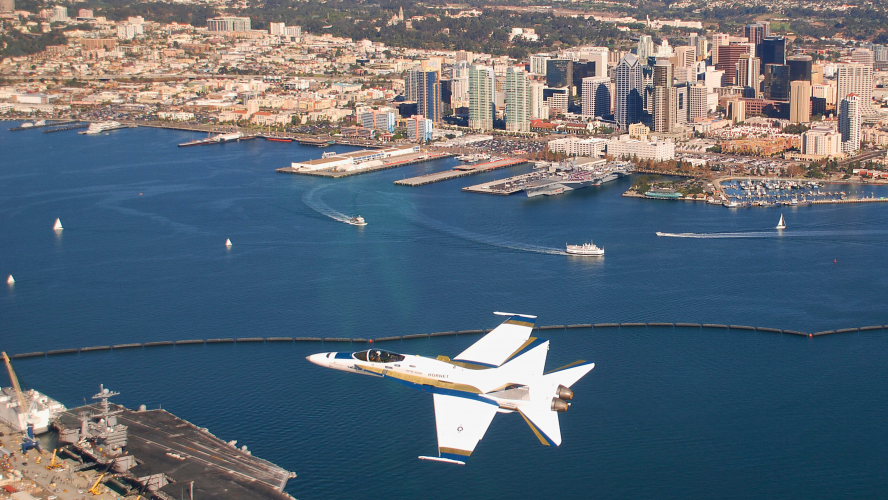Soaring Through Time: The Rich History of Aviation and Aerospace in San Diego
There are many reasons to appreciate sunny San Diego, California, but one that is often underappreciated or even unrealized is its strong history of aviation and aerospace. Over a century ago, at the earliest stages of aviation, San Diego began to establish itself as a vital hub for the industry. That rich tradition lives on today through internationally-recognized higher education programs, military bases and programs, prominent museums, leading aerospace firms, and a budding aerospace startup sector. At Natilus, we’re proud to be part of this community and illustrious legacy as we work on next-generation, autonomous cargo aircraft.
San Diego’s aviation history dates back to 1883 when inventor, engineer, and professor John Montgomery became the first person in North America to make a controlled flight in a heavier-than-air structure. Montgomery logged detailed observations of birds flying over San Diego Bay and applied those learnings to his flying inventions. His milestone achievement, and many experiments leading up to it, took flight from the coastal hills of southern San Diego.
In 1911, aviation pioneer Glenn Curtiss established the first U.S. military aviation school on North Island, at the north end of the Coronado peninsula on San Diego Bay. This iconic event cemented the city’s role in aviation history, as it produced the first licensed female pilot in the United States, Harriet Quimby, and provided training for several early military aviators. North Island is referred to by the Navy as “The Birthplace of Naval Aviation” and the foundations laid by Curtiss have transformed it into a sprawling military base and a breeding ground for aviation talent.
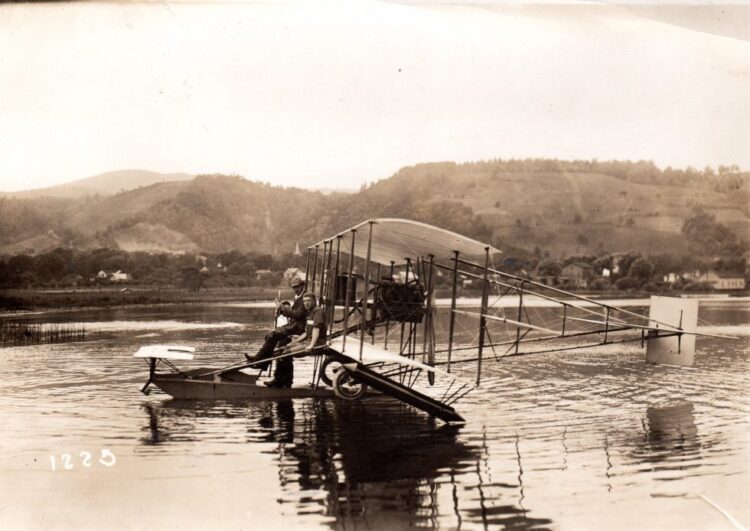
The Triad was successfully demonstrated on February 25th, 1911 in San Diego, California for the Army and Navy. Photo credit: https://glennhcurtissmuseum.org/education/who-was-glenn-curtiss/
One of the most renowned airplanes in history is The Spirit of St. Louis: a single-engine, single-seat, high-wing monoplane that was famously flown by Charles Lindbergh in 1927. That historic flight was the first solo nonstop transatlantic flight, in which Lindbergh piloted the plane from New York to Paris over 33 hours. What many people don’t know is that the Spirit was designed, built, and tested in San Diego by Ryan Airlines. Perhaps it should have been named The Spirit of San Diego, but alas its financial backing was from St. Louis. Not long after his famous flight, Lindbergh flew the plane to San Diego and was greeted with a hero’s welcome at Balboa Stadium by more than 60,000 San Diegans. You can see a flying replica of the original Spirit at the San Diego Air & Space Museum, and a reproduction of it at the San Diego International Airport.
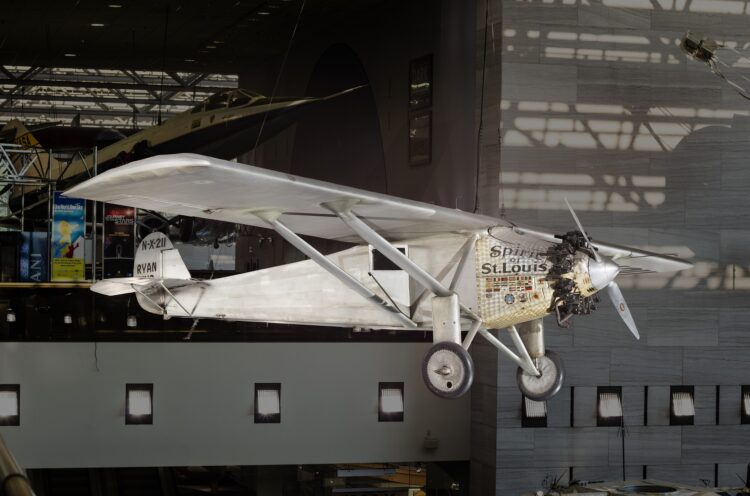
Ryan NYP “Spirit of St. Louis” on display in the Smithsonian National Air and Space Museum, Washington, D.C., June 29, 2016. Photo by Eric Long.
With the onset of World War II, San Diego’s aviation prowess took center stage. Consolidated Aircraft, later known as Convair, produced the PBY Catalina flying boats which were instrumental in anti-submarine warfare. They also produced the B-24 Liberator heavy bomber during World War II, and many other well-known aircraft after. By the end of the war, San Diego had shifted from a sleepy coastal town to a booming industrial city specializing in aerospace technology. The post-war period saw San Diego becoming a cornerstone in the U.S. defense strategy, thanks to companies like General Dynamics and Ryan Aeronautical. In the 1950s the city became the center of rotary-wing helicopter operations. During the Cold War era, San Diego was at the forefront of technological advancement, developing and producing the nation’s ballistic missiles.
More recently, San Diego became the nation’s capital of the unmanned aerial vehicle (UAV) industry, starting with the Global Hawk developed by Ryan Aeronautical (now part of Northrop Grumman). The turn of the 21st century saw a continued rise of private aerospace enterprises in San Diego. Companies like General Atomics and Northrop Grumman, both having a massive presence throughout San Diego County, have continually broken new ground on everything from drones to state-of-the-art avionics systems.
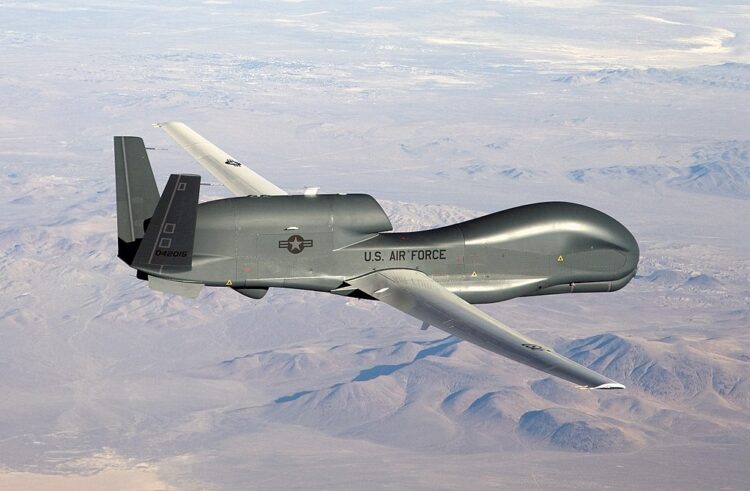
Northrop Grumman RQ-4 Global Hawk unmanned aircraft. Photo by Bobbi Zapka
San Diego also has incredible resources, such as the San Diego Low Speed Wind Tunnel (LSWT), now owned and operated by the San Diego Air & Space Museum. The LSWT, located at San Diego’s Lindbergh Field (San Diego International Airport), has been in operation since 1947 and has since conducted about 100,000 hours of testing on military and civil aerospace development programs. Some companies that utilize this one-of-a-kind wind tunnel include Boeing, Cessna, Gulfstream, Lockheed Martin, Northrop Grumman, and Natilus.
Today, Natilus is carrying the torch of San Diego’s rich aerospace history, bringing disruptive technologies to redefine the future of autonomous cargo transport. Our cutting-edge work in blended-wing-body aircraft design promises to revolutionize air cargo transport, making it more efficient and more environmentally friendly.
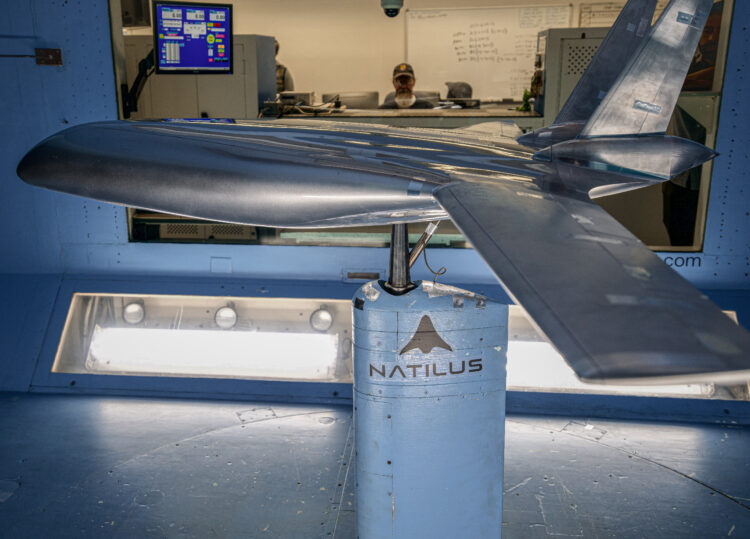
Natilus Kona wind tunnel testing at the San Diego Low Speed Wind Tunnel
Silicon Valley has software, Los Angeles has entertainment, New York has finance, and San Diego has aviation and aerospace. The city provides access to an abundance of engineering talent and serves as a gateway to a vast network of aerospace resources, ranging from research facilities to military collaborations. Major universities, including San Diego State University and UC San Diego, have prestigious Aerospace Engineering programs educating the next generation of aerospace innovators. Incredible sites like the San Diego Air & Space Museum and historic USS Midway Museum are also inspiring future trailblazers.
We invite you to join us in shaping the future of aviation, right here in San Diego—where aerospace history meets groundbreaking innovation. Learn more about Natilus and view open positions on our Careers page.
